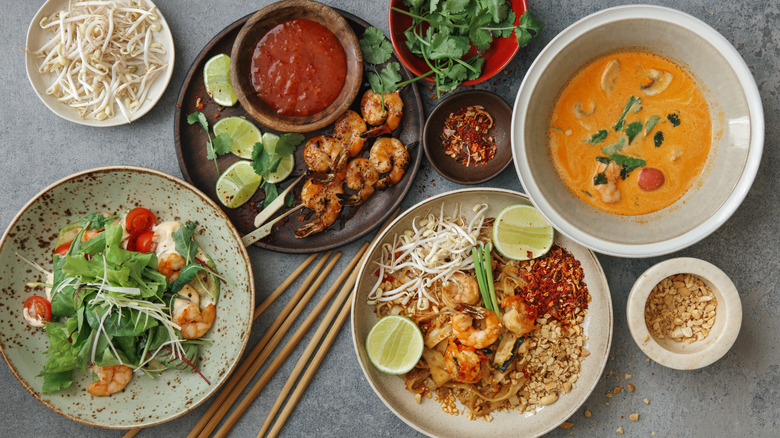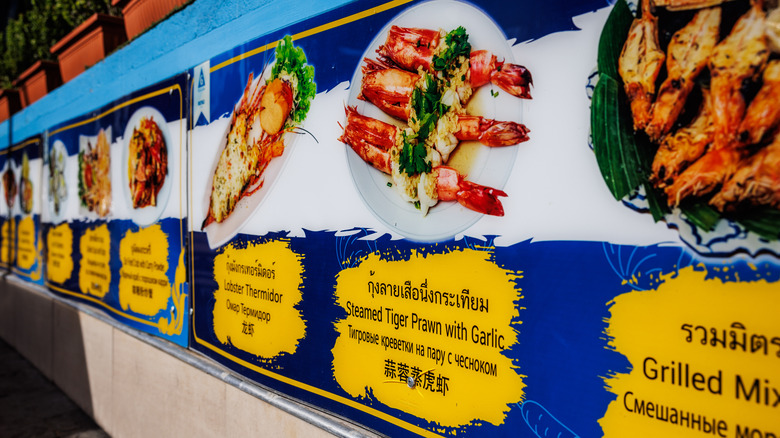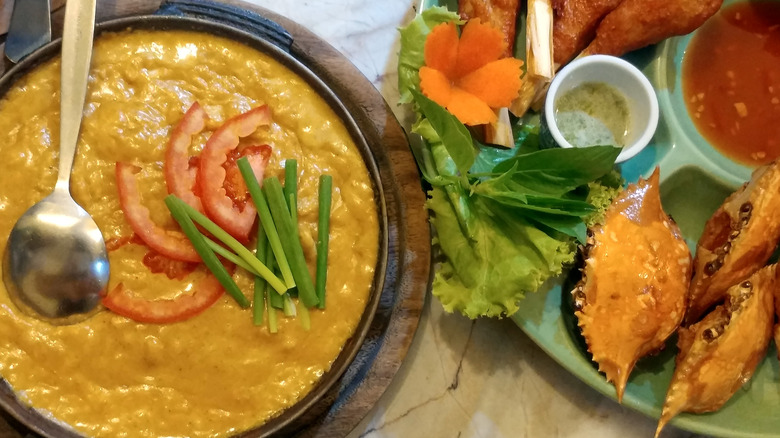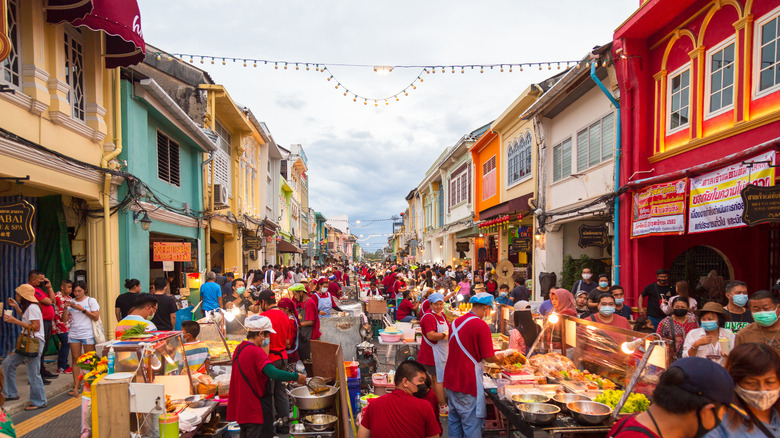How The 1960s Anti-Communist Movement Helped Spread Thai Cuisine To The States
Thai food is delicious and likely would've made its way around the world without help, but what did catalyze its spread was a decades-long campaign to expose the global market to Thai ingredients and dishes.
In 1950s America, few words were as unfashionable as "communist," and nationalists would as soon invite you to punch them in the nose than utter Marxist slogans in their presence. And while Senator Joseph McCarthy and House UnAmerican Activities Committee worked to weed out who they believed to be communists stateside, the American government was invested in stopping communism from gaining popularity in other countries.
As a result of this global mission, American soldiers occupying Southeast Asia during the Cold War were the first to sample Thai food. The dishes made an impression on them, as many visiting troops wrote cookbooks about what they tasted and brought the dishes back to suburban kitchens across the U.S. Shortly afterward, in the 1960s, the U.S. established a travel, trade, and immigration relationship with Thailand that officials hoped would help prevent communism from gaining a foothold in the country. This partnership made it easy for Americans to travel and explore native Thai cuisine, and Thai migrants soon opened up restaurants in the U.S. for folks here to sample as well.
Migration and promotion by the Thai government
The passageway between America and Thailand quickly emerged as a two-directional vein, and as Thai foodies immigrated to America en masse during the '60s and '70s, they brought their culinary stylings with them. Immigrants primarily settled in California, Illinois, Michigan, Texas, and Washington, D.C.
In addition to a genuine love of food and a desire to travel, this immigration push was also partially funded by the Thai government. In 2001, Thailand established the Global Thai Restaurant Company, Ltd., an international program to promote Thai cuisine, training chefs and paying to send them around the world to open new restaurants. The ultimate goal? Establish at least 3,000 Thai restaurants around the world. What was originally intended as an exercise in tourism stimulation created a ravenous global fanbase for classic Thai dishes like tom kha soup and Massaman curry.
Brick-and-mortar Thai restaurants started cropping up in America during the 1980s. Some of the first Thai dishes to find popularity among unfamiliar U.S. foodies were pad see-ew, pad Thai, and panang curry, which were approachable to unaccustomed Western palates yet showcased traditional Thai flavors.
A fusion of cultures — fascination meets assimilation
Thai food's popularity in the U.S. is also linked to Hollywood. As chefs immigrated to the Sunset Strip, celebrities like Madonna and David Geffen frequented the Thai restaurants breaking onto the scene, giving Thai food an air of glamor, intrigue, and fashion. When Anajak Thai opened in 1981, it was one of Los Angeles' first Thai restaurants, and Justin Pichetrungsi (son of founder Rick Pichetrungsi and recent James Beard Award recipient) indicated to CNN, the "diasporic cuisine became part of the rotation of American takeout."
Even with A-lister help, Thai food's journey to popularity wasn't without resistance. One of the major turning points that got foodies interested was when Andy Ricker opened Pok Pok in Portland, serving the dishes he fell in love with during travels to the Chiang Mai province. Surely, the development was momentous, but, as Mark Padoongpatt, professor of Asian American Studies, tells CNN, the fact that it took a white American chef backing Thai food to get folks curious about it illustrates the early-2000s attitude toward foreign cultures.
Thai food in America today
Today, it's hard to imagine a culinary scene in America without Thai food. Swing by Thai Diner in Manhattan's Nolita on an icy winter day, and you'll be lucky to get a table. The popular Food Network star's YouTube series "Thai Food At Home with Jet Tila" shows home cooks how to recreate their favorite dishes from Thai restaurants in their own kitchens. The Thailand episode of Anthony Bourdain's series "Parts Unknown" opens with an ode: "I remember the moment I first realized I'd been living my whole life in black and white ... That was it for me. From then on, there was no putting the pieces back together, no going home. Things were different now. Asia had ruined me from my old life."
Since the turn of the century, America's Thai population has roughly doubled in size. Yet, even though the demographic still makes up just 1% of the overall population, the U.S. is home to over 10,000 Thai restaurants (an impressively high proportion). Once-skeptical foodies have developed a craving for Thailand's citrusy, herbaceous dishes. Ingredients like coconut, lemongrass, bird's eye chilies, fish paste, oyster sauce, tamarind, turmeric root, and galangal (aka "lesser ginger") have broken onto the menus of dining establishments from fast-casual to Michelin-starred. In a 2021 press release by the Thai Trade Center, Thailand's Commerce Minister Jurin Laksanawisit aptly notes, "Thai food has become the world's food."



